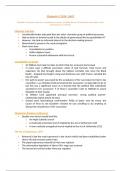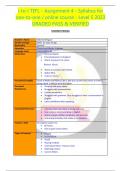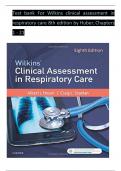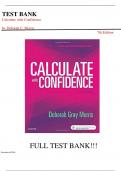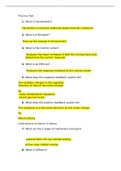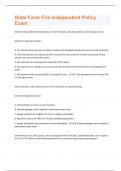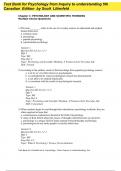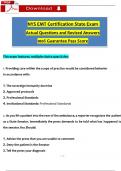Summary
Summary AQA History A-Level - 1C The Tudors - The triumph of Elizabeth I, 1563–1603 Comprehensive Revision Notes
- Module
- Breadth study
- Institution
- AQA
This document contains in-dpeth revision notes about Elizabeth I for AQA History A-Level. The specific points from the official AQA specification booklet are clearly marked and answered, thus, everything that the exam requires you to know for Elizabeth I is in this document. I achieved an A* at His...
[Show more]
